Imagine stepping into your backyard and being greeted by a stunning gazebo that feels like an extension of your home, a space where you can entertain guests or enjoy a quiet moment of reflection. Whether you’re a beginner dreaming of your first project or a seasoned homeowner seeking fresh inspiration, our guide, “15 Gazebo Design Ideas for Your Next Project,” will spark your creativity and help you envision the perfect outdoor retreat.
In this collection of ideas, you’ll discover designs that blend practicality with aesthetic appeal, ensuring your gazebo is both functional and beautiful. From maximizing space to choosing the right materials, each idea is crafted to boost your confidence and transform your outdoor area into a personal sanctuary. Dive in and let the joy of designing your ideal outdoor living space unfold!
Select Durable, Weather-Resistant Materials
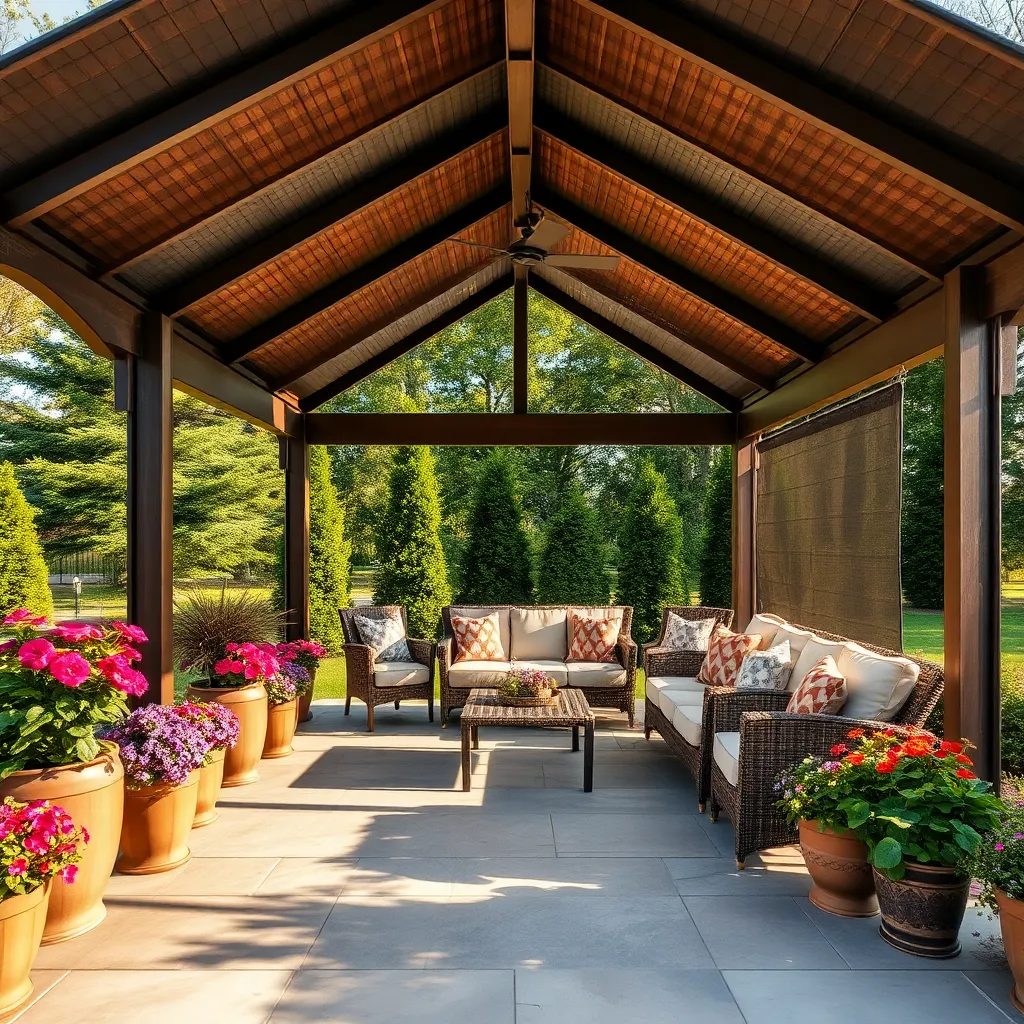
When selecting materials for your gazebo, prioritize those that are both durable and weather-resistant. Wood options like cedar and redwood are excellent because they naturally resist decay and insects. For a more modern look, consider metal structures made from aluminum or galvanized steel, which offer superb durability against the elements. If you’re in a high-moisture area, composite materials can also provide the appearance of wood while being more resistant to rot and warping.
For roofing, it’s essential to opt for materials that can withstand varying weather conditions. Asphalt shingles are a cost-effective choice that offers good protection, but if you’re seeking something more enduring, consider using polycarbonate panels or metal roofing. These materials not only provide outstanding protection from rain and snow but also add an elegant touch to your gazebo’s design. Remember, investing in quality materials upfront can save you maintenance time and costs in the long run.
Incorporate Built-In Seating Options
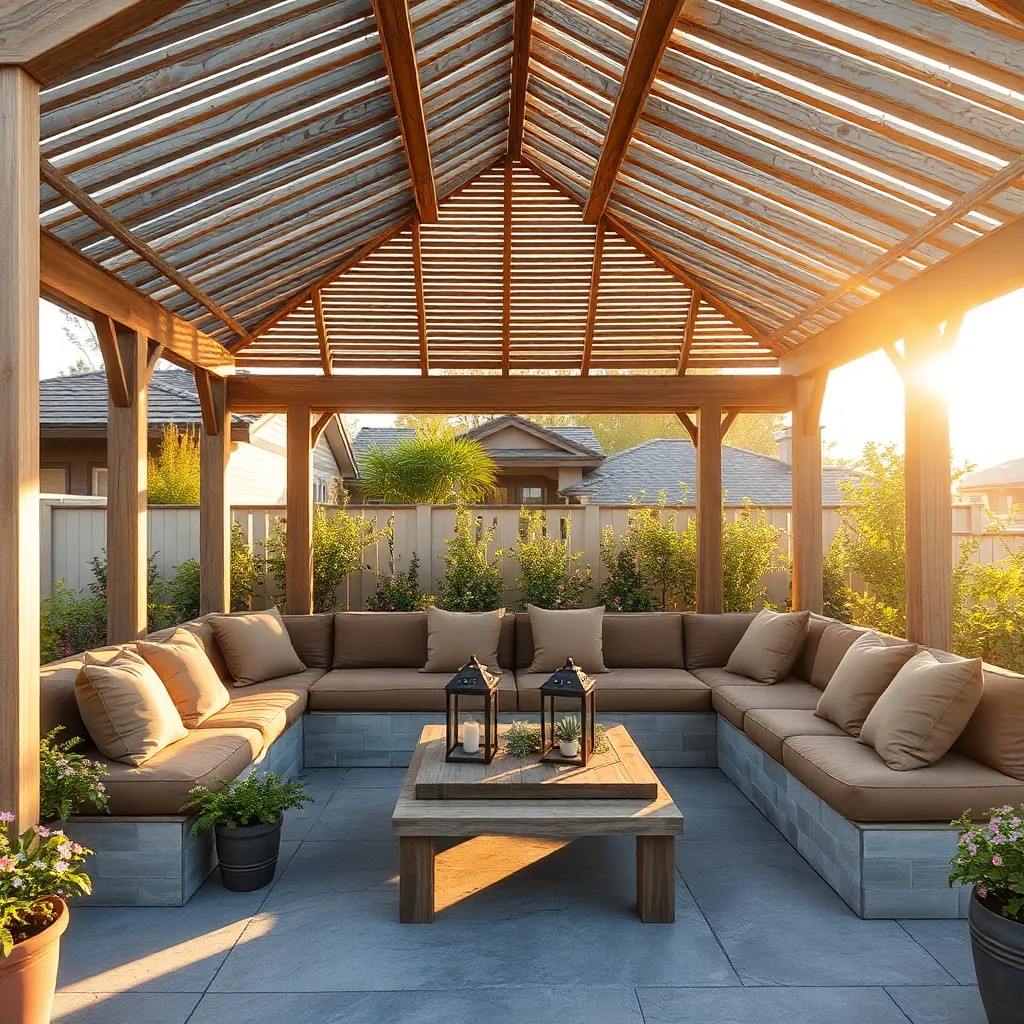
Incorporating built-in seating options in your gazebo not only maximizes space but also enhances its functionality and comfort. Consider using weather-resistant materials like teak or cedar that can endure the elements while providing a warm aesthetic. For a simple yet elegant design, construct benches along the perimeter of your gazebo with storage compartments beneath them. This setup offers a practical place to store cushions or gardening tools, keeping your space tidy and organized.
To cater to different comfort levels, include a mix of backless benches and those with supportive backs. Advanced builders may want to integrate ergonomic curves into the seating design for added comfort. Ensure the seat height ranges between 16 to 18 inches for optimal comfort and accessibility. Adding cushions with waterproof covers can provide a pop of color and additional comfort, making your gazebo a welcoming retreat for relaxation and social gatherings.
Choose a Versatile Roof Design
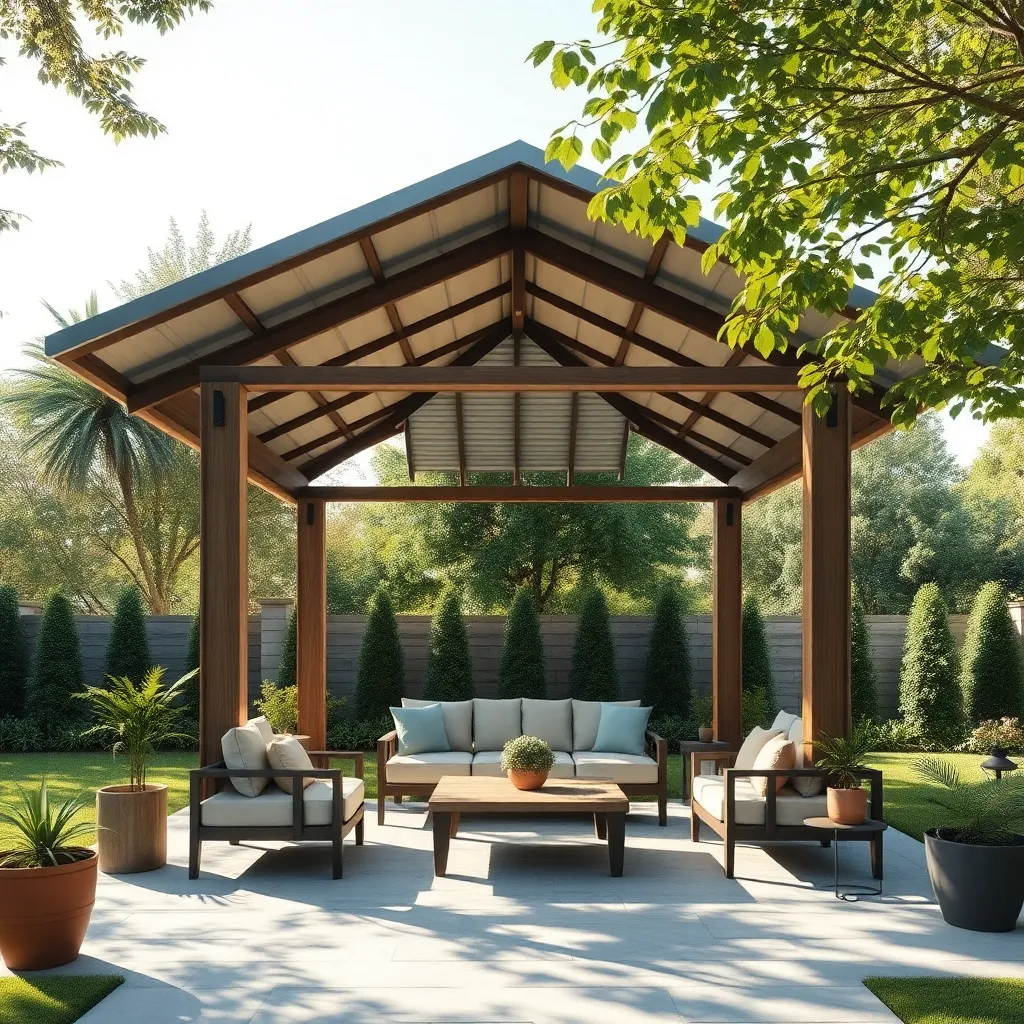
When choosing a versatile roof design for your gazebo, consider a hipped roof for its aesthetic appeal and functional benefits. This style offers excellent stability and wind resistance, making it a great choice for areas prone to harsh weather. Beginners can start with materials like pressure-treated wood or metal roofing, which are both durable and relatively easy to work with. For advanced builders, incorporating skylights or using polycarbonate panels can increase natural light while providing a modern touch.
Another option to explore is a gable roof, which is known for its simplicity and effective water drainage. This design is ideal if you’re looking to cover a larger area without compromising on structural integrity. Ensure proper support by using beams at a minimum of 4×4 inches for the framework. To add a custom flair, consider installing decorative trusses or using shingles that match your home’s exterior for a cohesive look. Whether you’re a novice or a seasoned builder, these roof designs can be adapted to suit your space and style needs.
Add Privacy With Lattice Panels
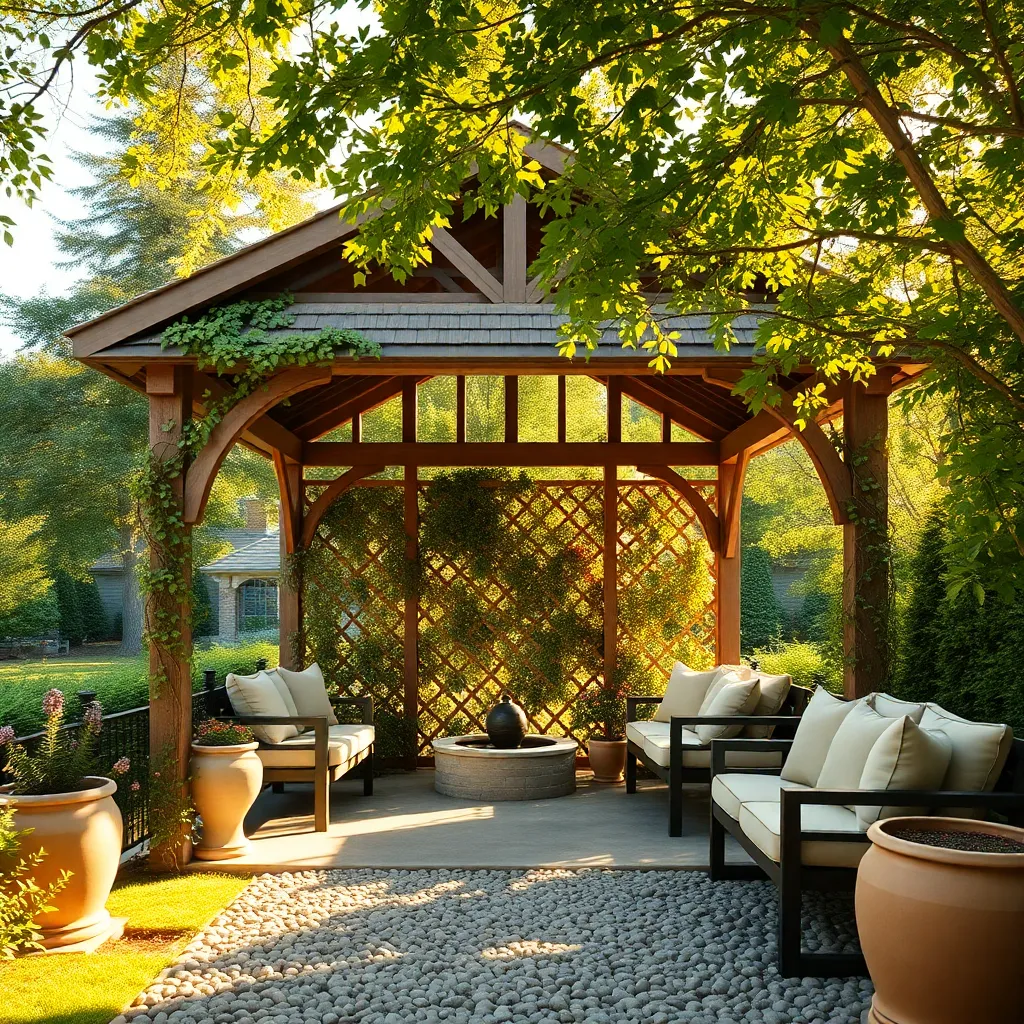
To enhance privacy around your gazebo, consider installing lattice panels. They offer a stylish and functional solution, providing both a sense of enclosure and a touch of elegance. Lattice panels can be made from wood, vinyl, or composite materials, each offering different levels of durability and maintenance. Wood is a classic choice for its natural look, but it requires periodic sealing to withstand the elements. Vinyl and composite options are low-maintenance and resistant to rot, making them ideal for those seeking a long-lasting solution.
When installing lattice panels, think about the height and spacing to ensure they meet your privacy needs. A panel height of 6 to 8 feet is typically effective for most residential settings. For a more advanced design, you might incorporate climbing plants like clematis or jasmine, which can turn your lattice into a living wall, adding greenery and fragrance. Ensure the panels are securely fastened to the gazebo structure to withstand wind and weather, using galvanized screws or brackets for added stability. This simple addition can transform your gazebo into a more intimate and personalized space.
Include Cozy Fire Pit Features
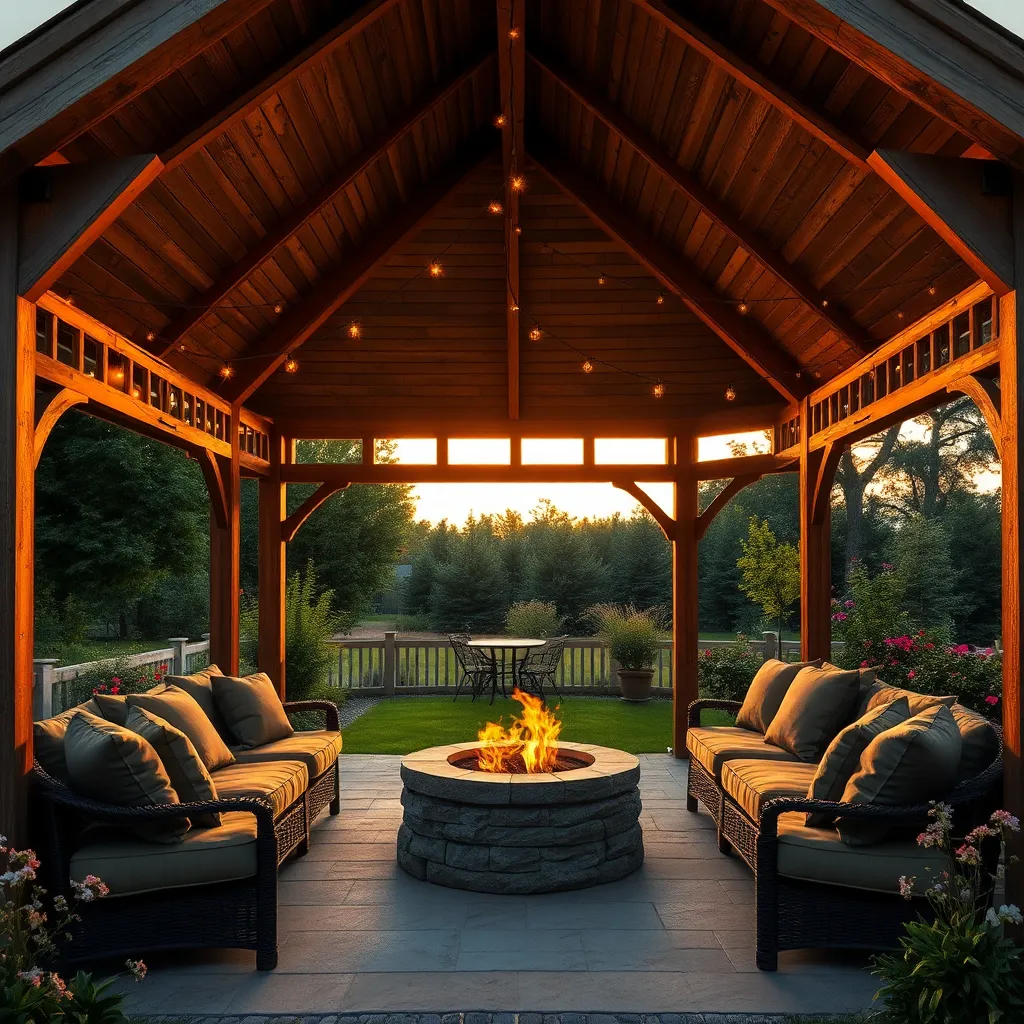
Transforming your gazebo into a cozy retreat can be as simple as adding a fire pit. Choose a fire pit that complements your gazebo’s style, whether it’s a rustic stone design for a natural look or a sleek metal model for a modern touch. Ensure the fire pit is at least 10 feet away from any structures or overhanging branches for safety, and consider incorporating seating like built-in benches or comfortable outdoor chairs around the fire pit to create an inviting gathering area.
For a more integrated design, you can opt for a fire pit table or a built-in fireplace feature within your gazebo. Materials like heat-resistant bricks or fire-rated composite decking can be used to ensure durability and safety. Experienced builders might consider adding a chimney or vent to manage smoke effectively, enhancing comfort. Remember to check local regulations on fire pits to ensure compliance, and always have a fire extinguisher or a water source nearby for emergencies.
Utilize Space With Hanging Planters
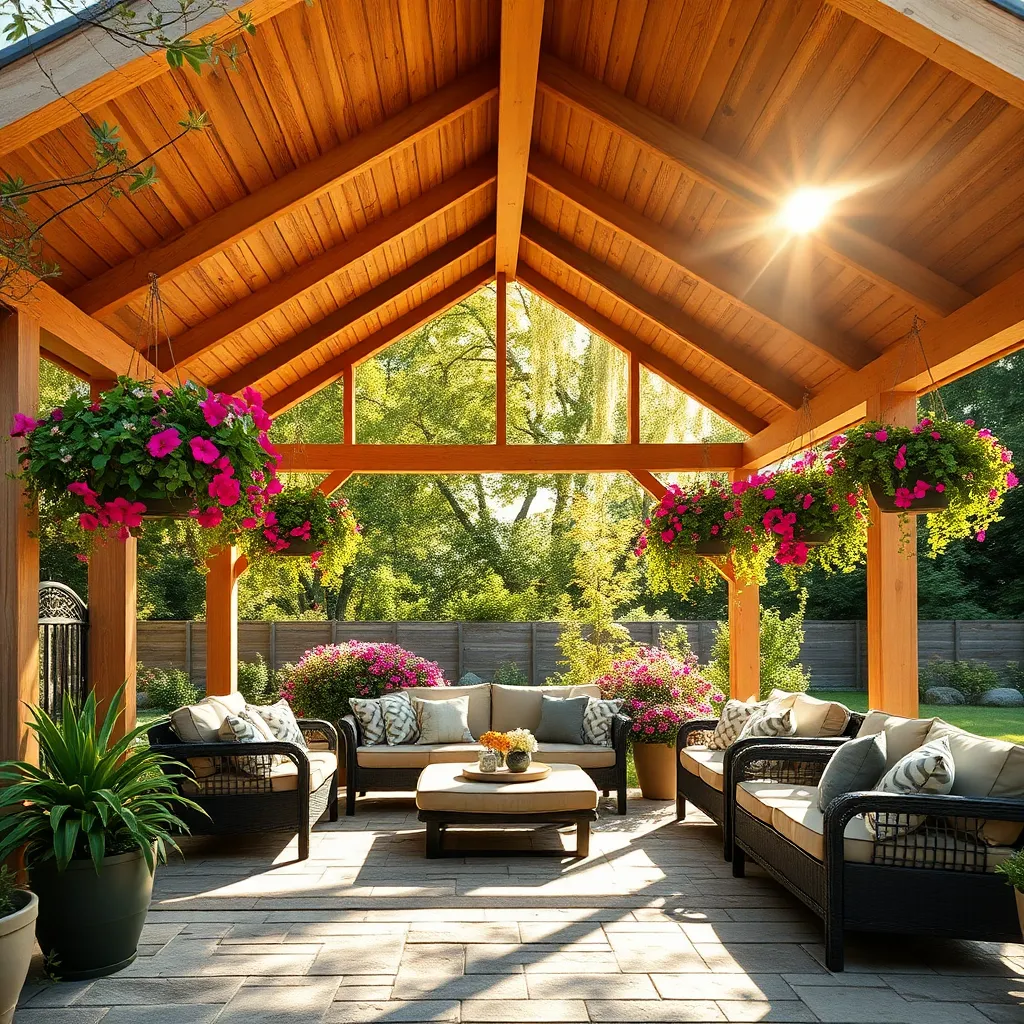
Hanging planters are a fantastic way to maximize space within your gazebo while adding a lush, green ambiance. Choose lightweight materials like coco coir or resin to ensure that your gazebo structure can support the additional weight without strain. For beginners, start with low-maintenance plants such as pothos or ferns, which thrive in various light conditions and require minimal care.
For those looking to elevate their design, consider layering planters at different heights to create a dynamic visual effect. Use sturdy hooks or decorative chains that can be easily attached to the gazebo’s beams, ensuring they are securely fastened. Advanced gardeners might explore vertical herb gardens, which not only beautify the space but also serve a practical purpose. Remember to regularly check for proper drainage to prevent water damage to your gazebo structure.
Enhance Ambiance With String Lights
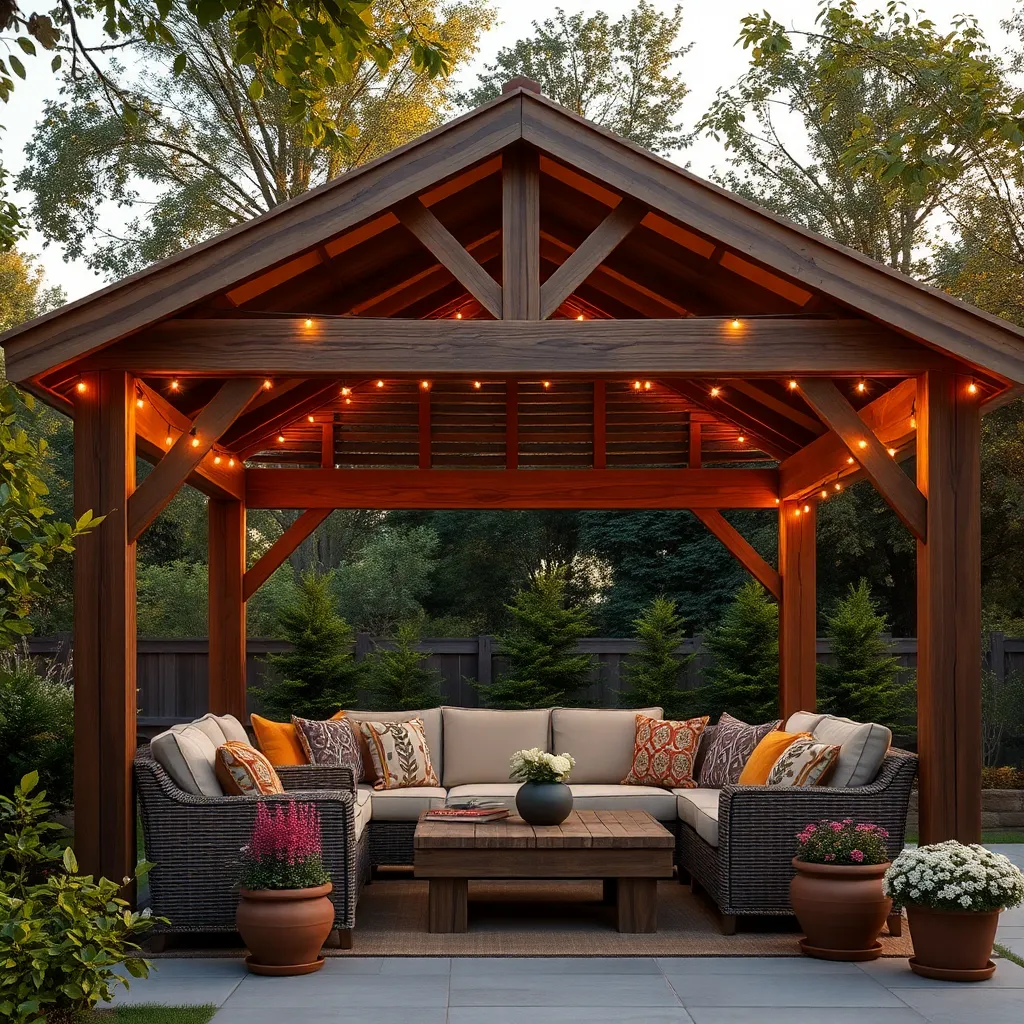
Transform the ambiance of your gazebo with the addition of string lights, bringing warmth and charm to your outdoor space. For a beginner-friendly option, opt for LED string lights, which are energy-efficient and available in various lengths and styles. Simply drape them along the eaves or wrap them around beams to create a cozy, inviting atmosphere. For a more advanced touch, consider using solar-powered string lights to eliminate the need for electrical outlets and minimize your carbon footprint.
When selecting string lights, pay attention to weather-resistant materials that can withstand outdoor conditions, such as PVC-coated wires. Opt for soft white or warm yellow bulbs for a classic look, or experiment with color-changing options for a festive vibe. To enhance the visual appeal, incorporate different lighting techniques like clustering lights in one corner or creating a cascading effect along the sides. These simple yet effective enhancements can make your gazebo a delightful evening retreat.
Opt for Modular, Expandable Layouts
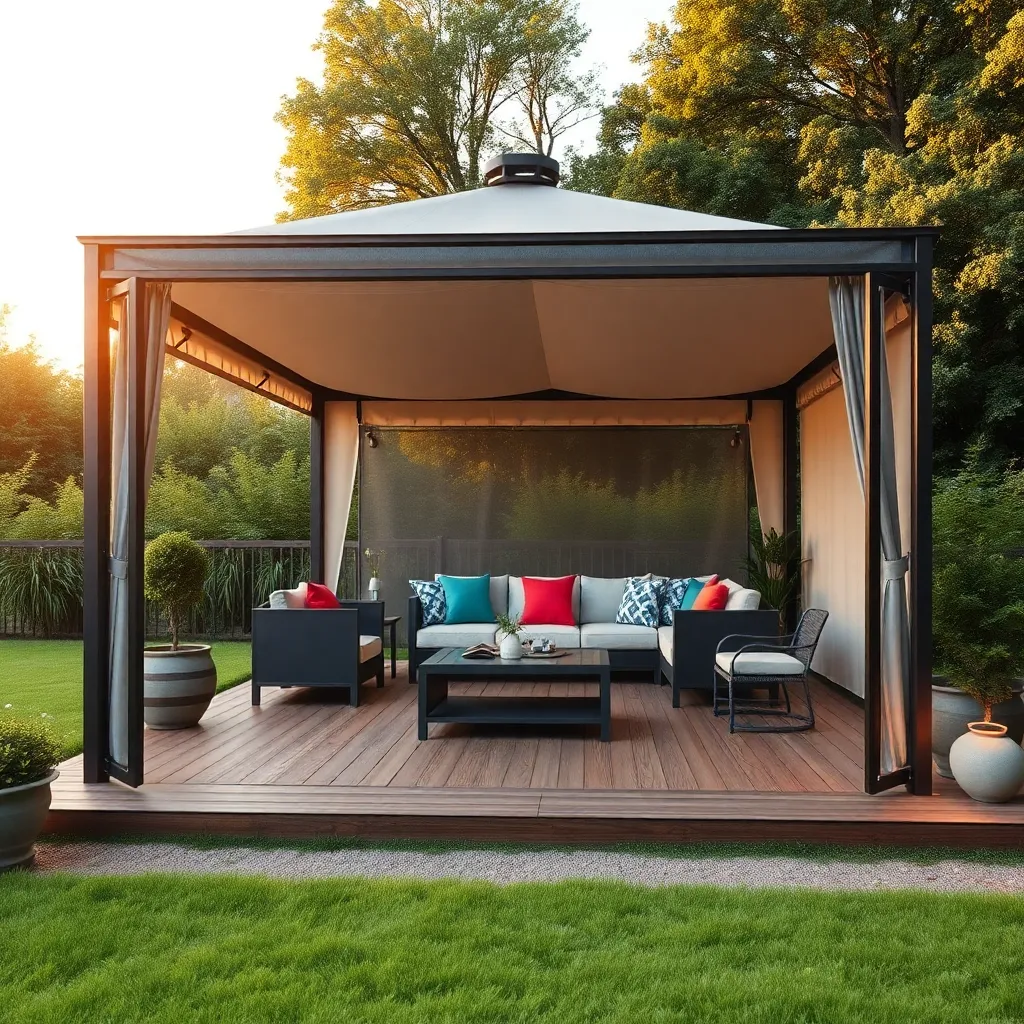
Choosing a modular, expandable layout for your gazebo allows you to adapt your outdoor space to changing needs effortlessly. Start with a basic framework using durable materials like treated wood or powder-coated steel for longevity. This foundational structure enables you to add elements such as additional seating or a bar area over time, without the need for a complete redesign. For a beginner, a simple square or rectangular design measuring about 10×10 feet provides ample space and is easy to extend.
For more advanced projects, consider incorporating interchangeable panels for versatile design options, such as sliding glass or weather-resistant fabric. These panels can provide varying levels of privacy and protection from the elements, making your gazebo usable year-round. When planning your layout, ensure you have a strong anchoring system in place to handle expansions, like concrete footings or heavy-duty ground stakes. This flexibility not only enhances functionality but also increases your investment’s value over time.
Install Efficient Drainage Systems
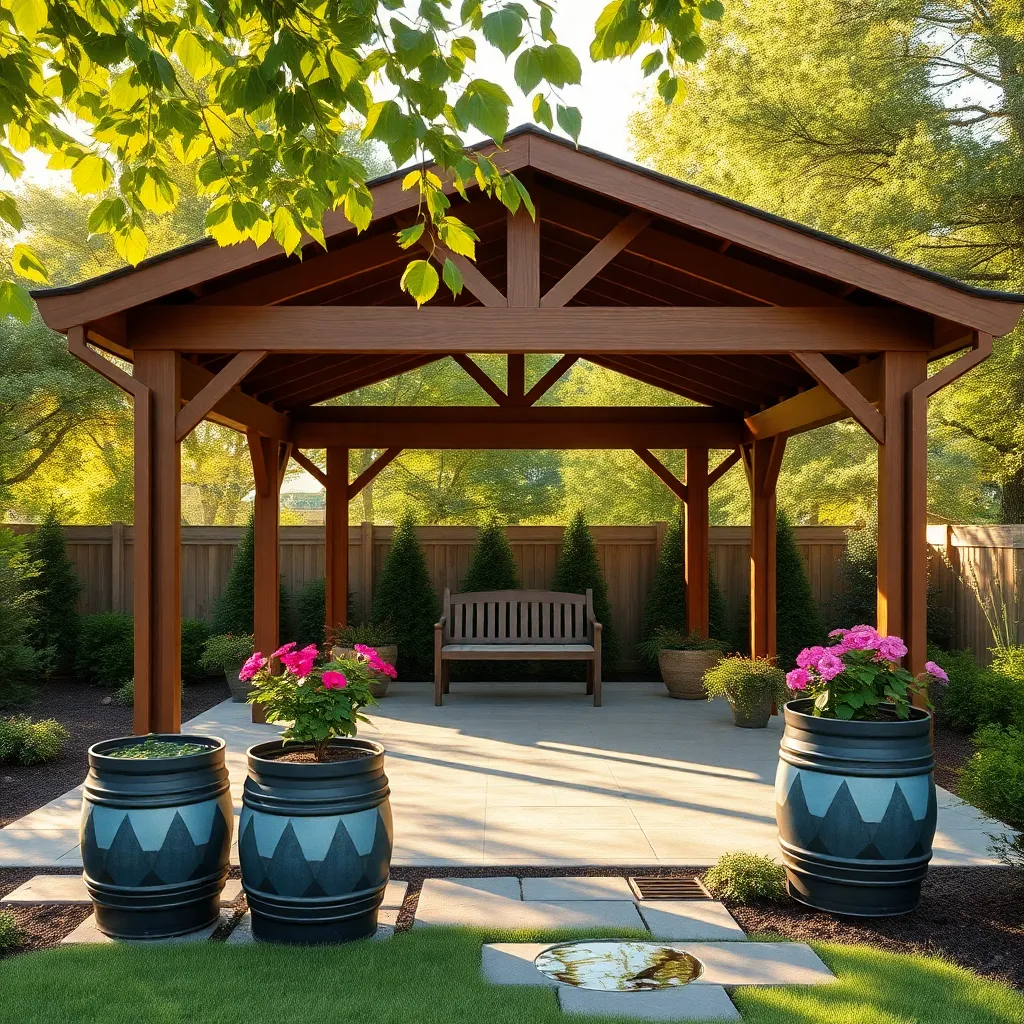
Ensuring your gazebo has an efficient drainage system is crucial to prevent water damage and maintain a sturdy structure. Start by grading the land around your gazebo to direct water away. A slope of about 1-2% is generally effective for most areas. To enhance drainage, consider installing a French drain system around the perimeter. This involves digging a trench, lining it with landscape fabric, and filling it with gravel and a perforated pipe to guide water away from the structure.
For an even more sophisticated solution, integrate a gutter system into your gazebo design. Use materials like aluminum or PVC for durability and low maintenance. Ensure the gutters are sloped correctly to lead water into downspouts that discharge away from the foundation. If you’re in a region with heavy rainfall, adding rain chains can be both functional and decorative, guiding water safely to the ground while adding a charming visual element to your gazebo. For beginner DIYers, starting with simple surface drains can be a more manageable first step.
Blend Surroundings With Native Plants
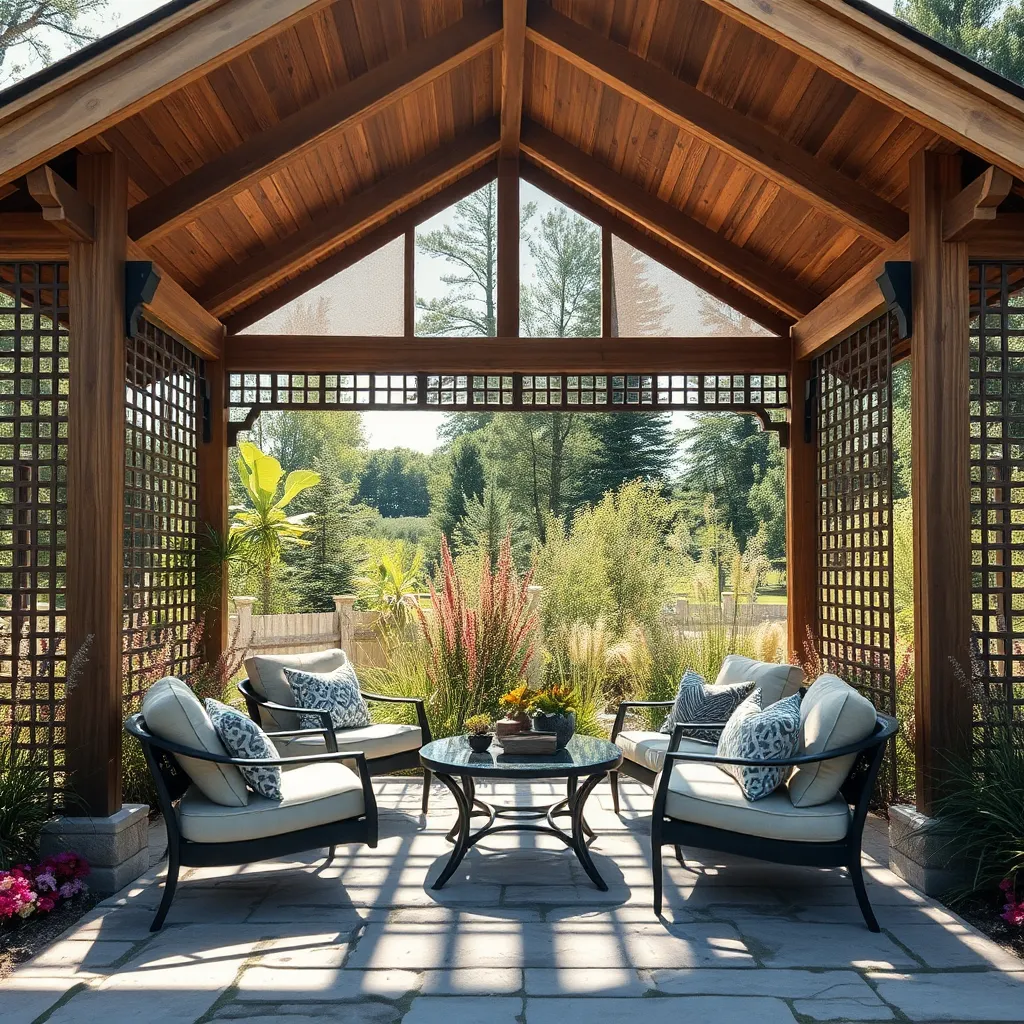
Incorporating native plants around your gazebo is a fantastic way to blend the structure with the surrounding landscape. Begin by researching plants indigenous to your area as they require less maintenance and are more sustainable. Positioning these plants strategically around your gazebo can enhance privacy, provide shade, and attract local wildlife, transforming your outdoor space into a natural haven.
For a polished look, consider using a mix of shrubs, grasses, and flowering plants that thrive in your climate. Create a layered effect by planting taller shrubs at the back and smaller plants in the front. This not only adds depth to your design but also ensures year-round visual interest. Advanced gardeners can experiment with plant combinations that bloom at different times, ensuring continuous color and texture throughout the seasons.
Use Neutral Tones for Flexibility
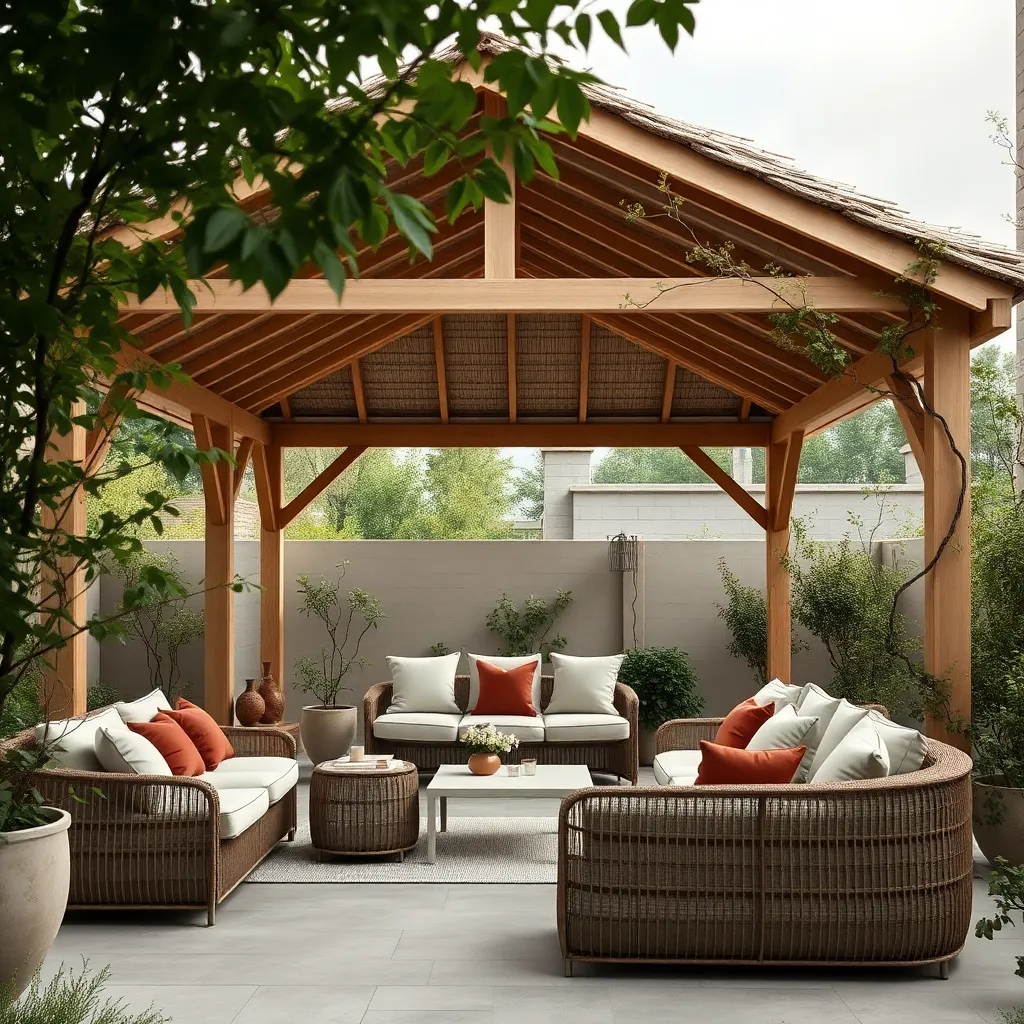
Opting for neutral tones in your gazebo design provides unmatched flexibility when it comes to decorating. Colors like beige, gray, and taupe blend seamlessly with various landscape elements and seasonal changes. For materials, consider using natural stone or weather-resistant wood finishes to maintain a cohesive look. These options not only offer durability but also ensure your structure remains timeless and versatile across different design trends.
For beginners, starting with a neutral color palette allows you to experiment with bolder accents, such as colorful cushions or vibrant plantings, without overwhelming the space. Experienced gardeners can take it a step further by incorporating subtle design elements like textured fabrics or patterned tiles that complement the neutral backdrop. When choosing materials, ensure they are suitable for your local climate to maximize longevity and enjoy a stylish, adaptable outdoor retreat for years to come.
Create Flow With Pathway Integration
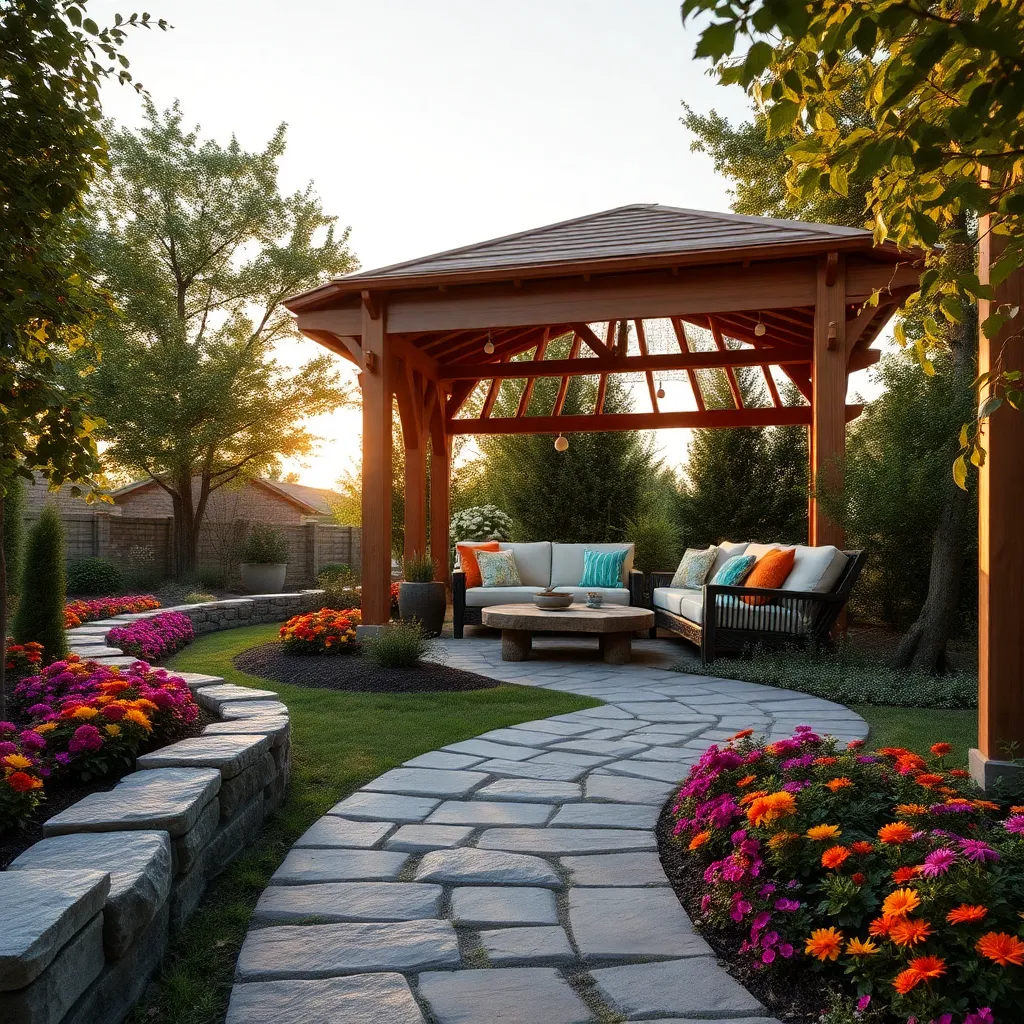
Integrating pathways into your gazebo design can create a harmonious flow throughout your outdoor space, enhancing both aesthetics and functionality. Consider using natural materials like stone or gravel for your pathways; these not only blend seamlessly with garden landscapes but also offer durability and low maintenance. For beginners, a simple gravel path edged with bricks or timber can be a cost-effective option, while more seasoned gardeners might explore intricate stone patterns or custom pavers to elevate their design.
To ensure your pathways complement your gazebo, focus on alignment and proportion. Paths should be wide enough for comfortable walking, typically around 3 to 4 feet, and lead visitors naturally from one area to another. For a more inviting atmosphere, consider incorporating gentle curves rather than straight lines, which can soften the look and encourage exploration. Adding ground-level lighting along the edges can also enhance safety and create a cozy ambiance for evening gatherings.
Maximize Views With Open Sides
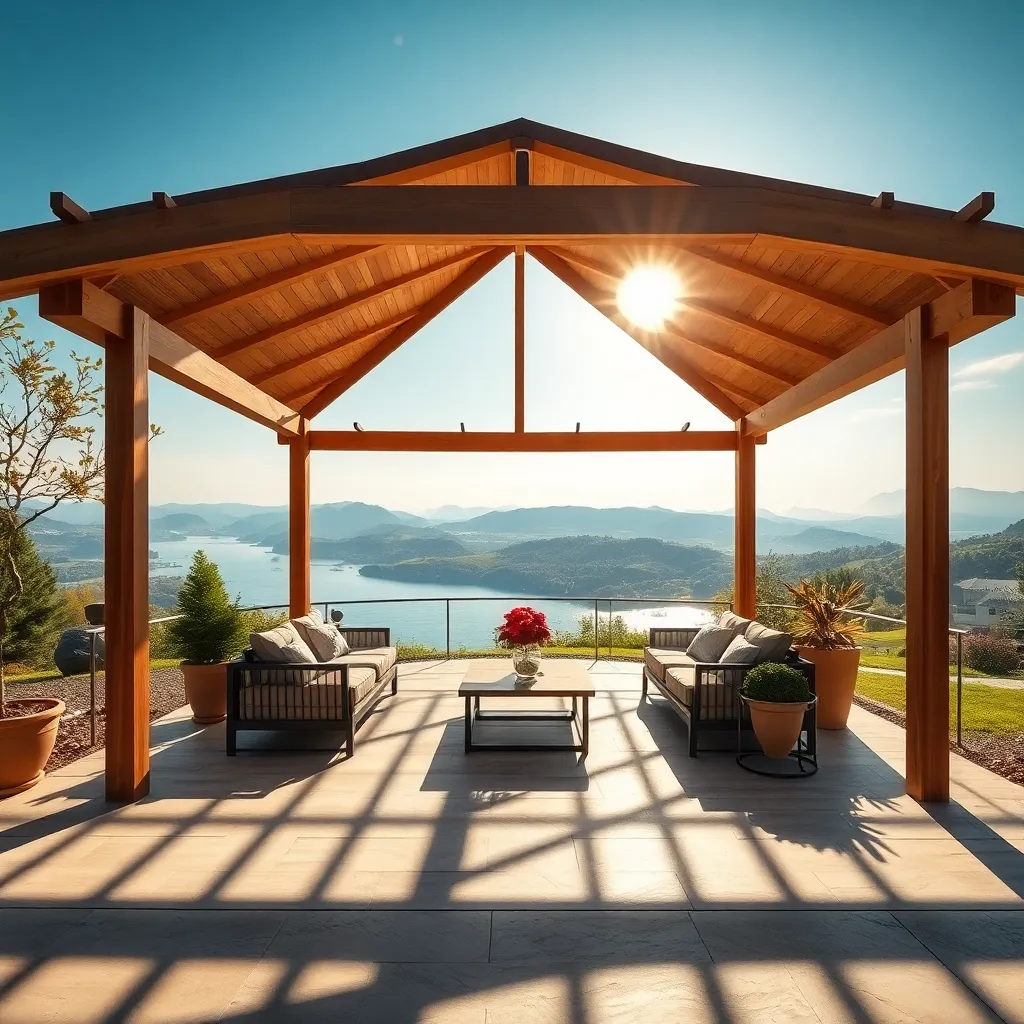
To maximize views with open sides in your gazebo design, opt for a structure that embraces its natural surroundings. Consider using materials like tempered glass or wrought iron to create an airy, open feel without obstructing sightlines. **For those in windy areas**, adding retractable screens or curtains can provide flexible coverage while maintaining that connection to the outdoors.
Enhance the open-sided design by incorporating elements that draw the eye outward. **Elevate your gazebo** with a slightly raised platform to give it a panoramic advantage, or position it strategically to capture the best views. For a polished look, finish the space with weather-resistant furniture and minimalistic decor that complements the landscape, ensuring the focus remains on the beautiful vistas.
Design for Seasonal Adaptability
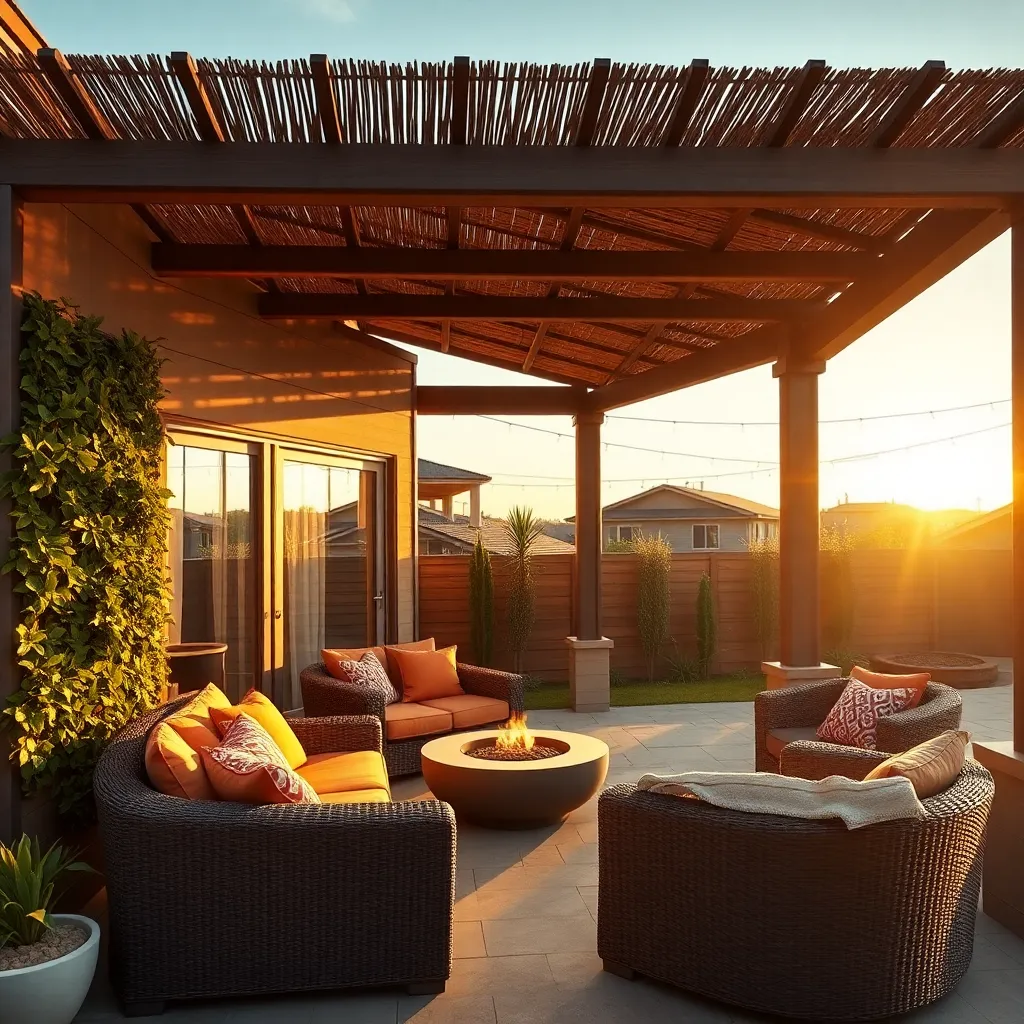
When designing a gazebo for seasonal adaptability, consider incorporating **removable wall panels** or **curtains** for flexibility throughout the year. These elements allow you to open up the space during warm months for ventilation and views, while providing shelter from wind and rain when the weather turns cooler. Opt for **durable, weather-resistant materials** like treated wood or powder-coated metal to ensure longevity, and choose fabrics that are UV-protected and water-repellent for the best performance.
Additionally, integrating a **multi-purpose roof design** can significantly enhance your gazebo’s adaptability. A roof with adjustable louvers or a retractable canopy can provide shade during the summer and allow more sunlight in during the winter. For a more advanced touch, consider installing **solar panels** on the roof to make the most of sunny days, providing an eco-friendly power source for lighting or heating elements. By using these techniques, you can create a gazebo that not only adapts to seasonal changes but also adds value and functionality to your outdoor space.
Incorporate Smart Home Technology
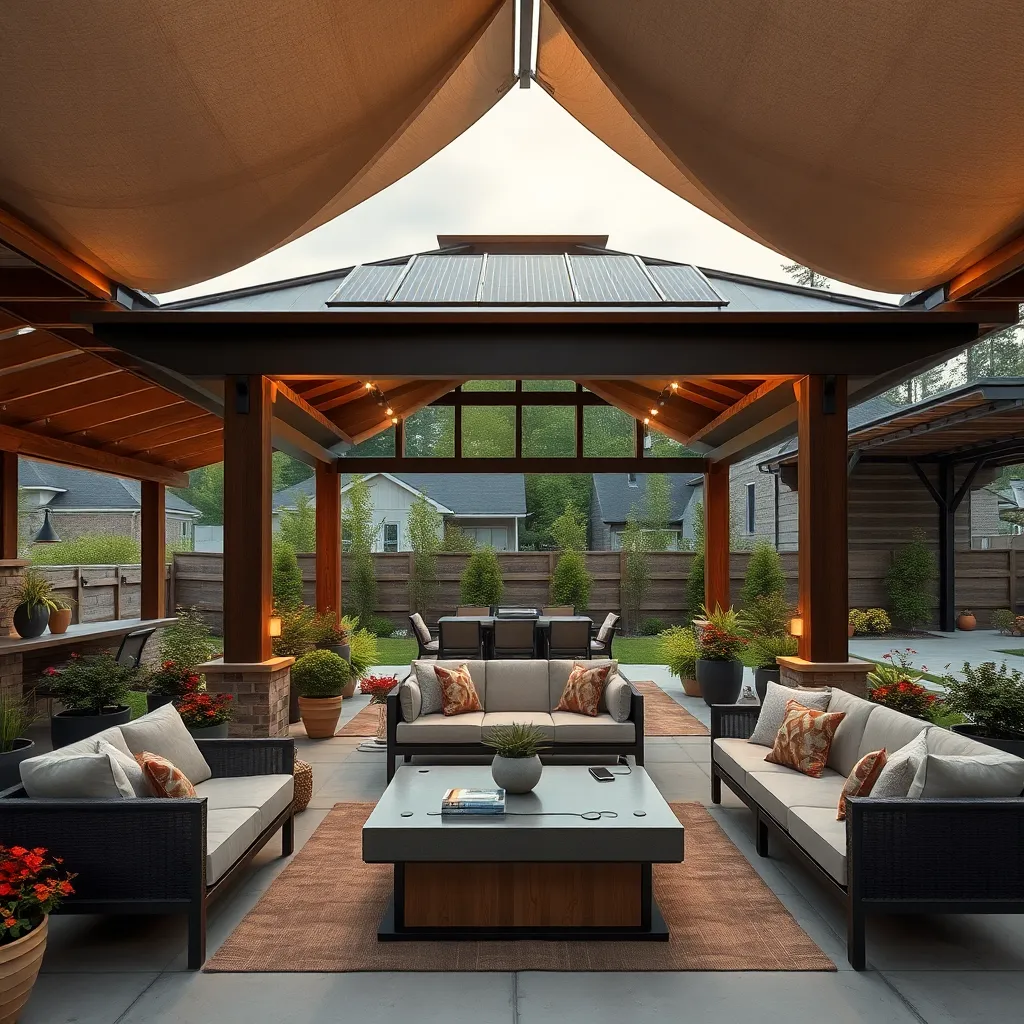
To enhance your gazebo with modern functionality, consider incorporating smart home technology. Start by installing smart lighting systems that can be controlled via smartphone apps or voice commands, offering convenience and ambiance customization. For a reliable setup, choose weather-resistant smart bulbs, ensuring they can withstand outdoor elements. Additionally, integrating smart speakers allows you to enjoy music or podcasts while relaxing, creating a more immersive outdoor experience. Ensure these devices are compatible with your existing smart home ecosystem for seamless operation.
Beyond entertainment, smart technology can also improve safety and security in your outdoor shelter. Install smart security cameras with motion sensors to monitor the perimeter of your gazebo. Opt for models with night vision and weatherproof features to ensure continuous protection. For those interested in energy efficiency, consider solar-powered smart devices that reduce reliance on traditional power sources. By thoughtfully selecting and installing these technologies, you can transform your gazebo into a high-tech haven that’s both functional and inviting.
Conclusion: Creating Beautiful Outdoor Spaces
In exploring ’15 Gazebo Design Ideas for Your Next Project,’ we’ve uncovered a variety of concepts that can enrich your relationship with your outdoor space and each other. From embracing open-air structures that invite conversation to cozy, intimate designs that foster closeness, each idea serves as a metaphor for nurturing the bonds we cherish. We’ve explored how adding personal touches can reflect shared memories, how multi-functional designs can enhance teamwork, and how integrating nature can remind us of growth and renewal in our partnerships.
Now, it’s time to take your vision from paper to reality. Choose one design that resonates with your relationship goals and start planning today; whether it’s sketching a layout or visiting a local garden center, small steps lead to meaningful transformations. As you embark on this journey, remember to bookmark this article for future inspiration and guidance.
Looking forward, let these gazebo ideas serve as a foundation for your relationship’s continued success. Embrace creativity, collaboration, and the beauty of shared spaces to strengthen your connection. With each design choice, you’re not just building a structure—you’re crafting lasting memories. Save this article as your go-to resource for relationship-building through creative projects.
